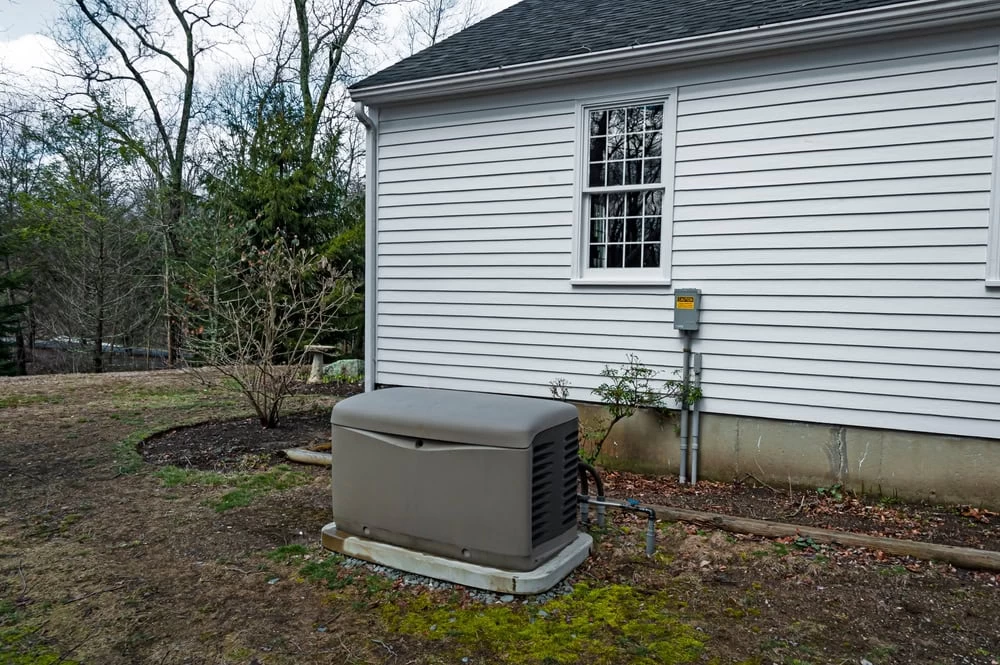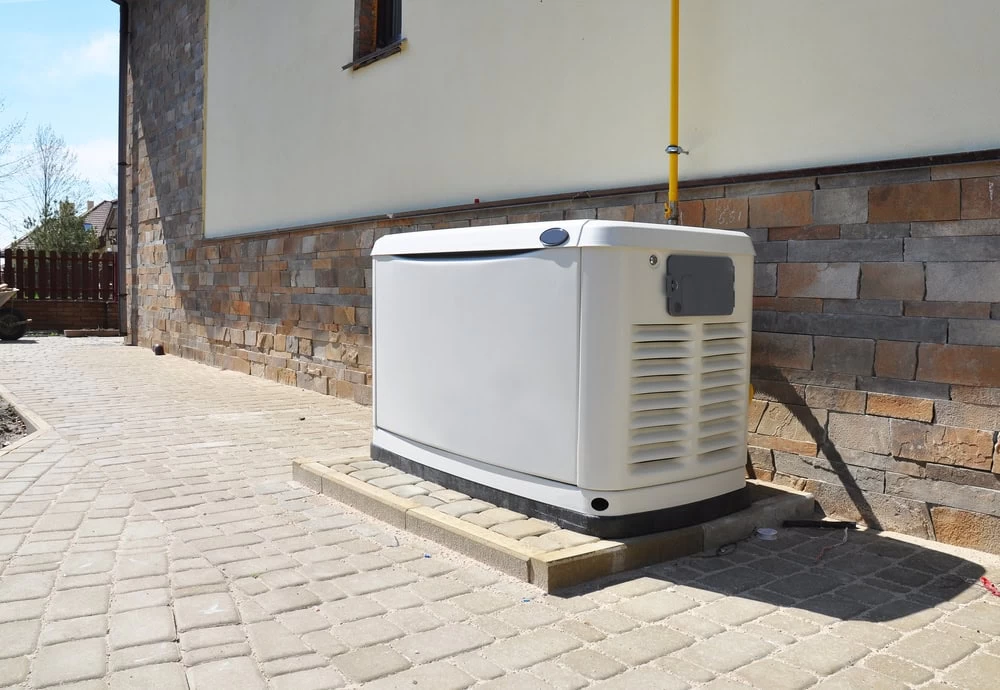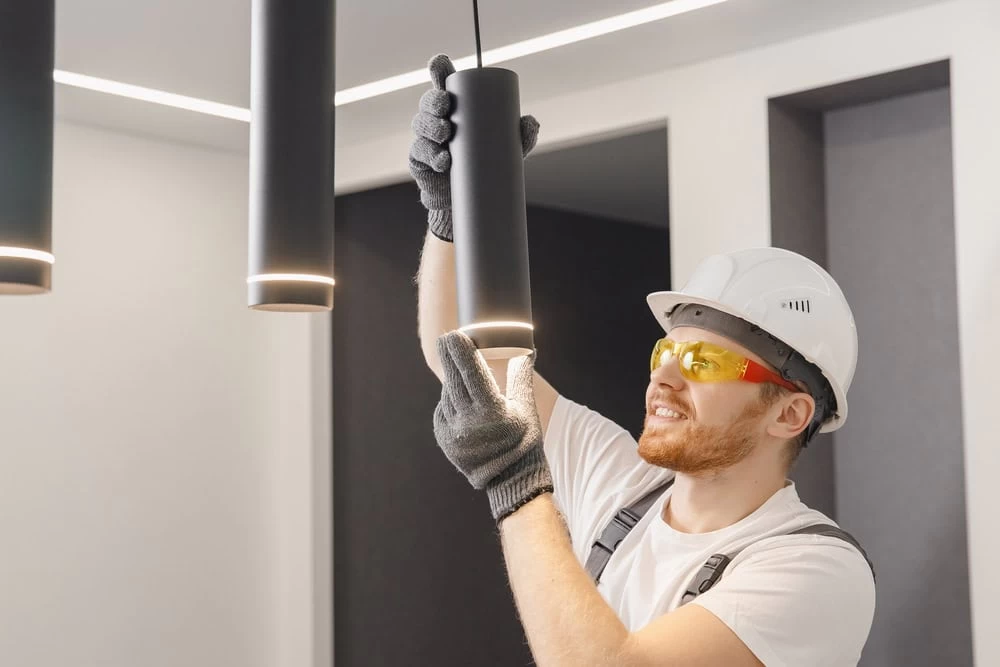Summary:
What Makes Automatic Transfer Switches Essential for Generator Installation
An automatic transfer switch does exactly what its name suggests—it automatically transfers your home’s power source from the utility grid to your standby generator when an outage occurs. Think of it as the brain of your entire backup power system.
Without this feature, you’d need to manually start your generator, then physically switch your home’s electrical panel to generator power every time the lights go out. That means getting dressed, going outside, and handling electrical connections in potentially dangerous weather conditions.
The automatic transfer switch eliminates all of that. It monitors your incoming utility power 24/7, and the moment it detects an outage, it signals your generator to start and seamlessly switches your home’s power source—all within seconds, without you lifting a finger.
How Automatic Transfer Switches Protect Your Family During Texas Weather Events
Texas weather doesn’t give you advance notice when it’s about to knock out your power. Ice storms, summer thunderstorms, and high winds can cut electricity without warning, often during the worst possible conditions—when it’s freezing cold, blazing hot, or in the middle of the night.
During the February 2021 winter storm, temperatures in Texas dropped to record lows while millions lost power for days. Families with manual generator setups found themselves trudging through ice and snow just to get their backup power running. Many couldn’t safely access their generators at all, leaving them without heat during life-threatening cold.
An automatic transfer switch changes this equation completely. When that storm hits and your power cuts out, your generator system responds instantly. Your heat stays on, your refrigerator keeps running, and your family stays safe and comfortable while you wait for utility crews to restore power. You don’t have to brave dangerous conditions or risk injury handling electrical equipment in the dark.
The system also protects your home’s electrical components from power surges and voltage fluctuations that often occur when utility power returns. This safeguarding feature prevents damage to sensitive electronics, appliances, and medical equipment—potentially saving you thousands in replacement costs.
For families with medical equipment, elderly members, or young children, this automatic protection isn’t just convenient—it can be life-saving. Your CPAP machine keeps running, your oxygen concentrator stays powered, and your home remains a safe haven regardless of what’s happening outside.
The Real Cost of Not Having Automatic Transfer Switch Technology
Here’s what happens when you install a generator without an automatic transfer switch: you’ve essentially bought an expensive piece of equipment that only works when you can safely operate it manually. During the exact moments when you need backup power most—severe weather events, nighttime outages, or when you’re not home—your manual system becomes useless or dangerous to operate.
Consider the practical reality. Power outages often occur during storms, meaning you’d need to go outside in potentially dangerous conditions to start your generator and switch your electrical panel. If you’re elderly, disabled, or simply not comfortable handling electrical equipment, your generator becomes worthless when you need it most.
The financial impact extends beyond the generator investment itself. Without automatic switching, you risk losing hundreds of dollars in spoiled food every time the power goes out for more than a few hours. Your home security system goes down, leaving your property vulnerable. If you work from home, you lose productivity and potentially income during extended outages.
Medical considerations add another layer of urgency. Families relying on powered medical equipment can’t afford to wait for someone to manually start backup power. The automatic transfer switch ensures continuous operation of life-supporting devices without interruption.
From a safety perspective, manual generator operation during outages creates multiple hazards. You’re handling electrical connections in potentially wet conditions, operating fuel-powered equipment in the dark, and creating opportunities for carbon monoxide exposure if proper procedures aren’t followed. The automatic system eliminates these risks entirely.
The peace of mind factor alone justifies the investment. With an automatic transfer switch, you can travel, work late, or sleep soundly knowing your home’s power protection operates whether you’re there or not.
Professional Generator Installation Services in Runnels County, TX
Installing a whole house generator with an automatic transfer switch isn’t a DIY project—it requires professional electrical work, proper permitting, and precise integration with your home’s electrical system. The installation process involves connecting to your electrical panel, running gas lines, pouring concrete pads, and programming the automatic switching system to work with your specific setup.
At Hooked Up Electric, we’ve been handling complex electrical installations in the Taylor County area for over 20 years. Our certified electricians understand both the technical requirements and local codes that govern generator installations in Runnels County, TX. We handle every aspect of the process, from helping you select the right generator size to ensuring your automatic transfer switch is properly configured for your home’s electrical needs.
The installation process typically takes a full day and requires coordination between electrical work, gas line connections, and system testing. Our team manages all the permits, inspections, and utility notifications required to get your system operational safely and legally.
Choosing the Right Generator Size and Transfer Switch Configuration
The size of your generator and the configuration of your automatic transfer switch work together to determine what stays powered during an outage. This isn’t a one-size-fits-all decision—your setup needs to match your home’s specific electrical demands and your family’s priorities during power outages.
For most Runnels County, TX homes, a 20-24 kW generator provides enough power to run essential systems like heating and cooling, refrigeration, lighting, and some outlets throughout the house. Smaller homes might get by with a 14-16 kW system, while larger homes with multiple air conditioning units, pools, or extensive electrical demands might need systems in the 30+ kW range.
Your automatic transfer switch configuration determines which circuits get power during an outage. A whole-house transfer switch powers everything in your home, just like normal utility service. A load-management transfer switch prioritizes essential circuits and can temporarily shed non-critical loads if your generator reaches capacity.
The load-management approach often provides the best value because it allows you to power more of your home with a smaller generator. For example, your system might run both air conditioning units most of the time, but temporarily switch off one unit when your electric dryer kicks on, then switch it back when the dryer cycle ends.
Our team evaluates your home’s electrical panel, identifies your critical circuits, and calculates your power requirements to recommend the optimal generator and transfer switch combination. We consider factors like your home’s square footage, number of air conditioning units, electric versus gas appliances, and any special requirements like home offices or medical equipment.
The goal is creating a system that keeps your family comfortable and safe while maximizing the value of your investment. We’ll walk you through different scenarios so you understand exactly what will and won’t have power during an outage, ensuring the final setup matches your expectations.
Installation Timeline and What to Expect During the Process
A professional generator installation with automatic transfer switch typically takes one to two days, depending on your home’s electrical setup and any additional requirements like gas line extensions or electrical panel upgrades. Here’s what the process looks like from start to finish.
Day one usually focuses on site preparation and electrical work. Our team starts by pouring a concrete pad for your generator if one isn’t already in place—this needs to cure properly before we can set the equipment. While that’s happening, we handle the electrical connections, installing your automatic transfer switch and running the necessary wiring between your electrical panel, transfer switch, and generator location.
The gas line connection comes next, whether you’re using natural gas or propane. For natural gas systems, we coordinate with your utility company to ensure proper connection and pressure testing. Propane systems require setting up your storage tank and running the supply line to your generator location.
Day two involves setting the generator, making final electrical and fuel connections, and programming your automatic transfer switch. This includes testing all the safety systems, verifying proper voltage and frequency output, and running through complete transfer cycles to ensure everything operates correctly.
The final step is system commissioning, where we test your generator under load, verify the automatic transfer switch responds properly to simulated outages, and walk you through basic maintenance requirements. We also handle all required inspections and utility notifications to ensure your installation meets local codes.
Most installations require minimal disruption to your daily routine. We’ll need to shut off your main electrical power for short periods while making panel connections, but we coordinate these interruptions to minimize inconvenience. Your home’s power stays on throughout most of the installation process.
After installation, your generator system runs automatic self-tests weekly to ensure everything stays in working order. These tests typically last about 15 minutes and help identify any potential issues before you actually need backup power.
Getting Your Runnels County Home Ready for the Next Power Outage
Power outages in Texas aren’t a matter of if—they’re a matter of when. The 2021 winter storm proved that even the most prepared utilities can face challenges beyond their control, leaving millions without power for days. Smart homeowners in Runnels County, TX are taking control of their power security with whole house generator systems that include automatic transfer switches.
The investment in professional generator installation pays dividends in comfort, safety, and peace of mind. Your family stays warm during winter storms, cool during summer outages, and secure knowing your home’s essential systems keep running regardless of grid conditions. The automatic transfer switch makes this protection seamless and reliable, operating whether you’re home or away.
If you’re ready to protect your Runnels County home with a professionally installed generator system, Hooked Up Electric has the experience and expertise to get the job done right. Our certified electricians will help you select the right equipment, handle all the installation details, and ensure your system operates safely and reliably for years to come.




